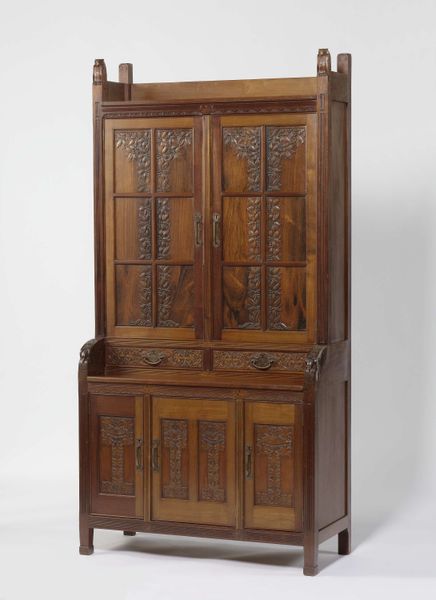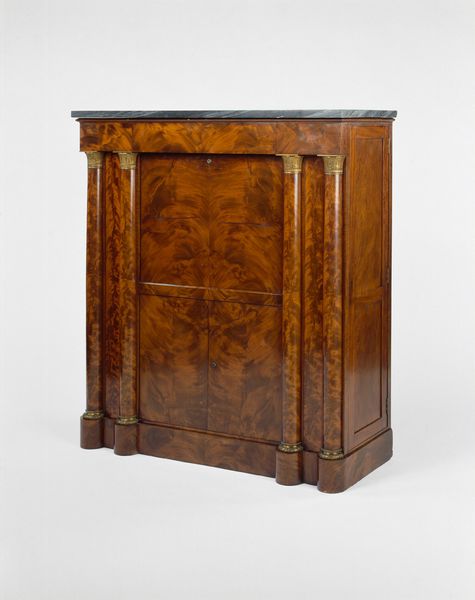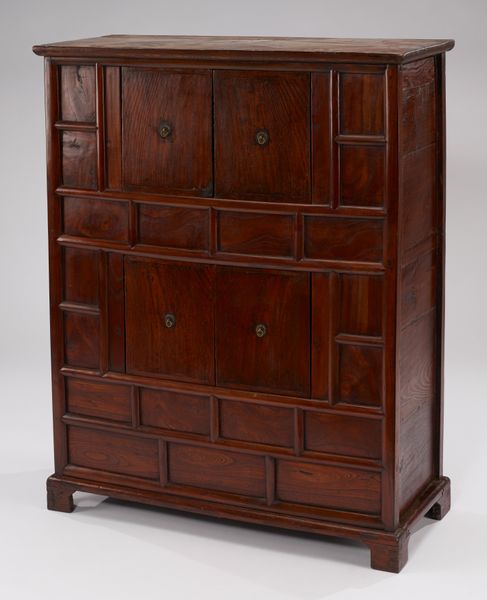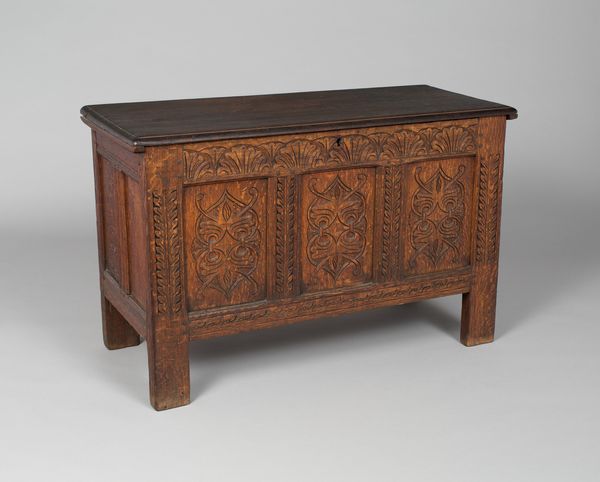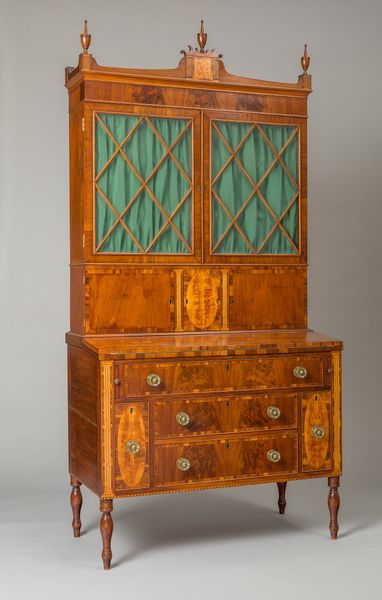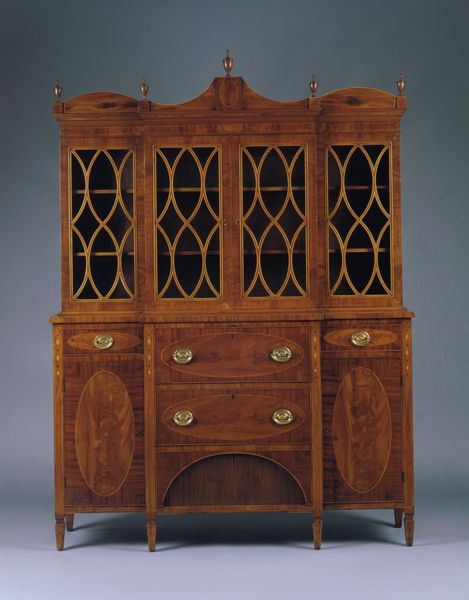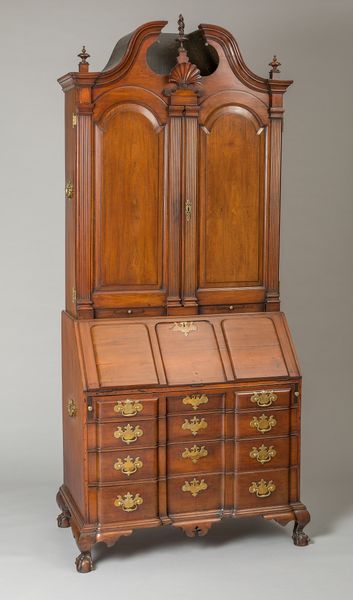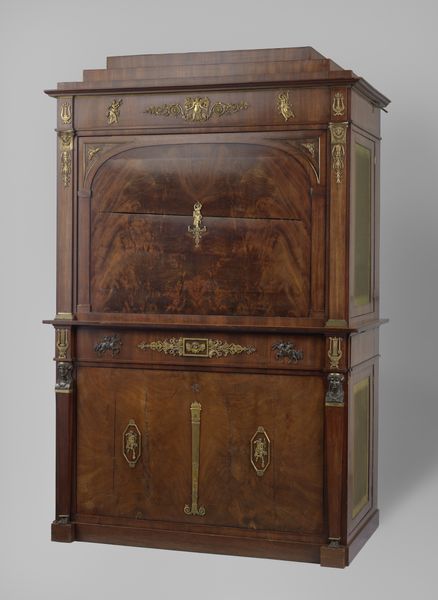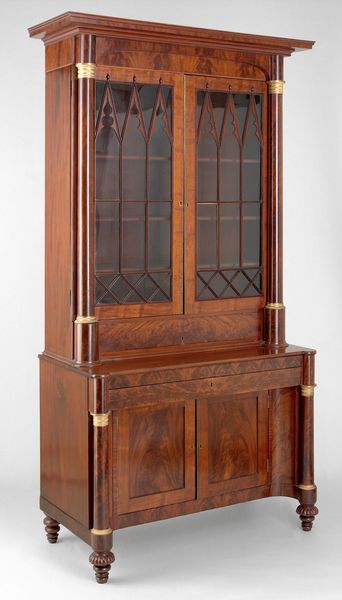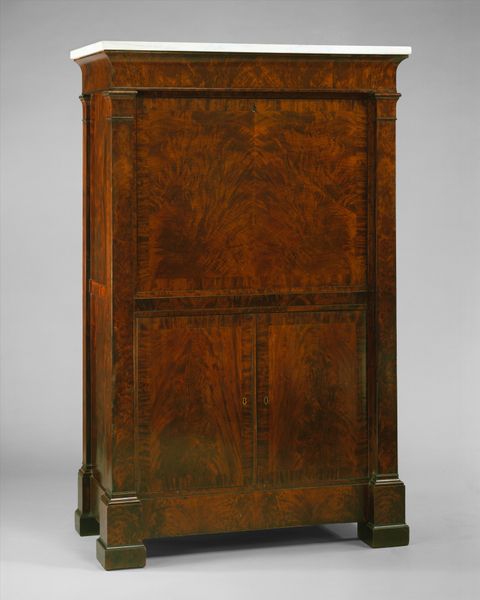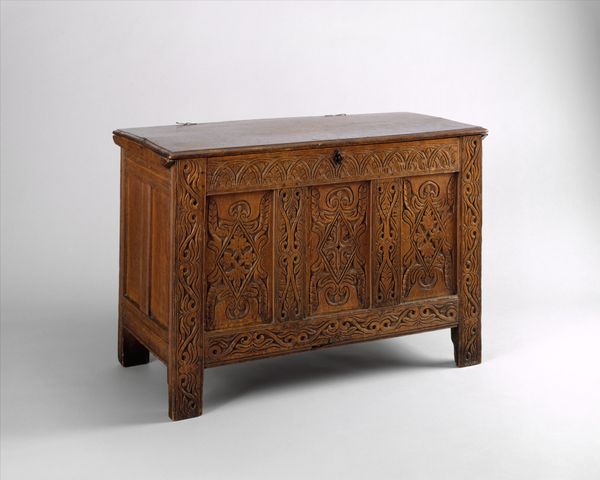
Kast met twee deuren en daaronder laden met een grillig gebeeldhouwd ornament c. 1911s
0:00
0:00
wood
#
art-nouveau
#
furniture
#
wood
#
decorative-art
Dimensions: height 175.0 cm, width 182.0 cm, depth 49.0 cm, weight 126 kg
Copyright: Rijks Museum: Open Domain
Curator: Look at this fascinating cabinet crafted around the 1910s by Michel de Klerk. It's a wooden piece showcasing Art Nouveau influences. Editor: The wood grain itself is incredibly striking, almost like waves frozen in place. And those stark, dark handles! There’s a visual tension between the fluid patterns of the wood and the geometric forms surrounding it. Curator: Right, De Klerk was deeply involved with the social housing projects of his time. Furniture like this wasn’t just decorative. It played a key role in creating a sense of dignity and belonging for working-class families. The aesthetic choices made a powerful statement about their value. Editor: Absolutely. The vertical emphasis, the repetition of those cylindrical forms across the top—they create a powerful sense of order. Yet, it’s an order that never becomes rigid or oppressive, because of the hand-carved details, the asymmetry of the “grillig gebeeldhouwd ornament,” as the Dutch so wonderfully put it. Curator: The very choice of wood is laden with significance. Unlike the exotic materials often favored by the wealthy, wood connects directly to labor, the earth, the home. This furniture embodies an ethical aesthetic, opposing elitist taste. Editor: I also notice the very particular placement of light and dark tones. See how the doors are made from light-colored wood while all bordering surfaces are a darker tone. The overall effect gives one a deep feeling of richness. Curator: It's also important to view such domestic art pieces within a colonial context, especially considering that wood sources may come from colonized lands, influencing local and international politics. It pushes the conversation about material culture, ownership and the accessibility of well-crafted commodities for all, not just the privileged. Editor: Thinking about the relationship between form and function in a broader sense allows me to come back to the visual analysis: the contrasting woods and geometric decorations of this artwork are, ultimately, in the service of creating an intimate human space, one that invites touch and use. Curator: Absolutely. I hadn't considered it in quite that way. I will reconsider form and function. Editor: The combination is striking! Thank you!
Comments
No comments
Be the first to comment and join the conversation on the ultimate creative platform.

